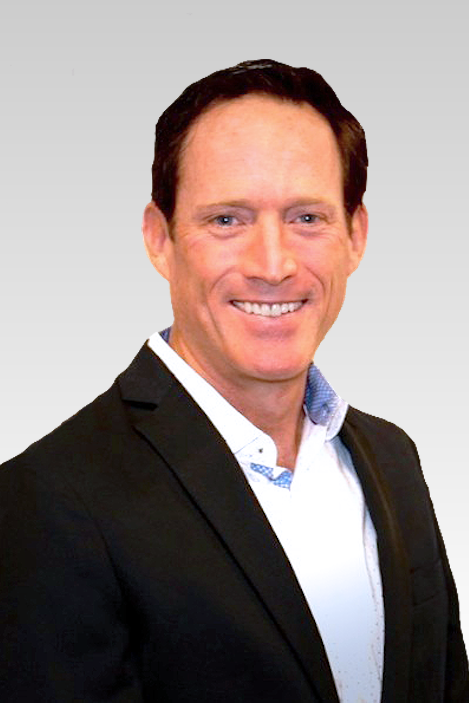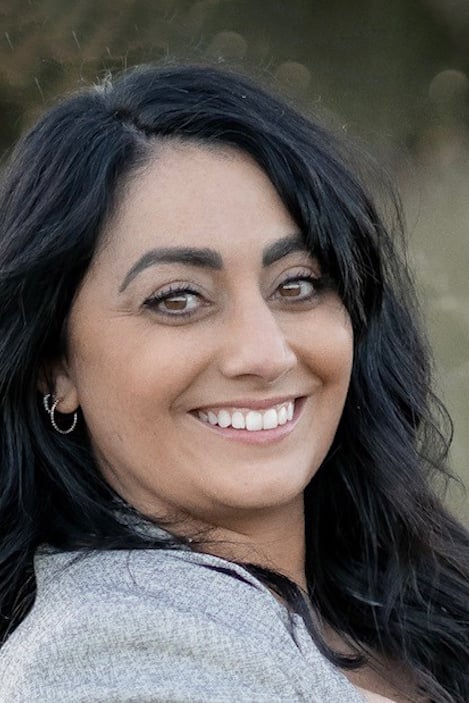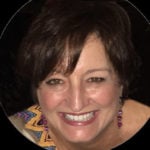Customer success can drive real value for your customers, but the pitfalls to getting there can be many. MarketSource’s Director of Customer Success Jeff Heckler spoke with customer success leaders of three global enterprises about which ones to avoid and how they drive business value through their customer success organizations:

Jeff Heckler
Director of Customer Success

Jennifer Furrer
Manager of Customer Success, EMEA Autodesk

Chad Horenfeldt
Head of Enterprise Customer Success, Meta

Angel Rogers
Head of Global Customer Success, Rockwell Automation
On a webinar we hosted in late May 2023, From Customer Success to Value Realization, Jennifer, Chad, and Angel shared their 40 years of collective customer success wisdom on achieving post-sale customer success, driving upsell and cross-sell opportunities, meeting client expectations, and taking a value-driven approach to customer success. Here’s a summary of their insights, broken down by the following topics:
- Customer Success Organizational Constructs
- Customer Success KPIs
- Scaling Customer Success
- Making Customer Success a Strategic Partner
- Emerging Customer Success Trends
Customer Success Organizational Constructs
Jeff (MarketSource): Can each of you speak a little about how your customer success teams are organized?
Jennifer (Autodesk): We basically segment our customers based upon their size, which is very common in the industry. We have a customer success team dedicated to small business customers, one for mid-size customers, and one for our enterprise customers. My team act as customer success advisors, looking after the onboarding and adoption part of the customer lifecycle. We also have a team dedicated to renewals. We always make sure that we have a proper handoff before and after the renewal stage. We’ve replicated that same structure across all the industries that we cover at Autodesk.
Jeff (MarketSource): Do you have pooled models as well?
Jennifer (Autodesk): We have both. If you look at the mid-market and the enterprise segments, then you have a portfolio that you work with. In small business, it’s more of a territory that you cover. Within that territory, you would have focused accounts that you would work with most often. But in the end, you’re covering a territory, and if you look at mid-market and enterprise, you have portfolio customers that you work with over a longer period.
Chad (Meta): I started as our head of customer success and built a team. Initially, we started with four people and built up to about 23. We were traditionally more enterprise-focused, so most of our team’s energies converged there. In the beginning, our team consisted of just customer success managers. Then, I built out a different segmentation, where we separated our SMB, mid-market, and enterprise/strategic accounts. I also implemented a technical account management (TAM) team. The majority of our team were customer success managers. Then, we had five technical account managers that worked really closely with our customer success managers and our SMBs.
This past year, we built out our pooled model for SMB with digital customer success. I assumed responsibility for our enterprise onboarding/implementation team, as well as our enterprise customer success team. In this economy, we’re focused on protecting revenue, which means focusing on onboarding from large implementations. From there, we handle ongoing value realization, business reviews, and reviewing adoption, making sure that our customers are getting the most value from our platform.
The technical account managers help us review the requirements and determine what those next steps are, whether we need to bring services in, or whether the client do those themselves and just pair up with the customer success manager to help generate value. We don’t necessarily have to go to product and say, “Hey, can you build out this feature?” because the platform was so robust. Regardless, the customer success manager always maintains the lead role.
Angel (Rockwell Automation): Our business is fairly complex, and we have customers that are spending anywhere from $500 a year to tens of millions in annual recurring revenue (ARR). We are attempting to build a segmentation approach that considers annual spend with the complexity and maturity of our offers to ensure we have the right coverage model. We also have to remember that it’s not always one size fits all from a CSM perspective; we have regional customer success managers that can cover our different segmentations based on language and country needs and we have enterprise customer success managers for our largest global customers. Our customer success managers are leveled 1-5 and are doing a lot of core customer success work (like onboarding, adoption, business reviews, etc.), as well as renewals and expansion. We also have a robust and mature channel play across distributors, OEMs, and system integrators. As a result, we have partner success managers that are helping us to scale through our distributors but still have that same sort of coordination and complementary motion as the rest of our customer success org. We also have a low dollar, high volume group of customers, and while we want to invest in them, it can make for a tricky ROI. This is where we also use a third-party vendor approach to augment our staff. It should be a consistent experience, but we do use different levels of resources for a varied approach.
Also, because some of our offers are very complex, we have created a customer success domain expert role. These are highly technical experts, like the technical account management Chad was describing. They can be brought in with a hand raise (request) from a customer success manager when they see an opportunity for us to have a next level technical conversation. The domain experts are similar to a typical sales engineer, except their entire prioritization is around our existing customers and can only be engaged through customer success.
We also have a really amazing support structure built around our customer success managers; including an operations team that owns the customer success technology and data and are focused on how we can make our processes repeatable and effective for our customer success managers (among many other things), a customer success strategy team that is working with our product owners to build our offers with customer success in mind, a Continuous Improvement team, and a Digital Experience team. These are just some of the supporting functions that we found critical to building out our customer success organization to its full potential.
Customer Success KPIs
Jeff (MarketSource): Let’s talk about metrics. When we’re measuring value and driving to our customers’ outcomes and goals in their KPIs, and we’re hopefully going to map to what they’ve defined as value attributes, what are some of the key metrics that you really zero in on? They may vary from one customer, one segmentation, or one vertical to another.
Angel (Rockwell): This is an exciting discussion taking place within customer success right now and one that is continuing to evolve. I am not sure that anybody I have talked to has figured out the best metrics to measure customer value achievement, but we do look at some lagging financial metrics, such as net revenue retention (NRR) or net dollar retention (NDR), which tell us if our customers are renewing and if they’re buying more. I use these lagging metrics because I believe that if our customers are renewing and buying more, that it’s in large part due to our customer success managers having driven value realization and outcomes with them.
While these are more outcome metrics, it can be difficult to measure customer value on behalf of the customer, and I try to avoid metric-ing activities that can lead to “check the box” behaviors from our teams. For example, in the early days of customer success, we looked at how many business reviews our customer success managers completed as a measure of success, but in all actuality, measuring those didn’t necessarily translate to value from a customer’s perspective. We are now focused on taking the customer’s business outcomes and the activities that we believe can lead to customers achieving them. It’s all about the customer realizing value on their terms and in their language, and for us it’s about focusing our activities to make sure we help get them there.
We are piloting digital success plans with customer-facing templates developed by our customer success strategy team. As new offers come to market, we’re building these success plans as a sort of guide, that our customer success managers can personalize and fill out based on the individual customer’s needs and in collaboration with our customers. For me, when our customers are signing a shared, co-created document, a process almost like an architectural blueprint review, that is saying, “we are in this together, and we agree this is what success looks like.” From there, we start working toward the customer’s outcomes, together. Within these success plans, we have value and outcome fields that can be captured in our systems, which can then be reported on as metrics of success. But we still have a long way to go in terms of maturing and measuring these non-financial metrics.
Chad (Meta): We have lagging metrics as well, like retention and cross-sell rates. We go back twelve months, and we look at that data as part of that cohort. I also like to look at the quarterly logo retention rate and cross-sell retention rate, but again, those are our lagging metrics.
At the enterprise level, like Angel with business reviews, you must go a level deeper. One of the things that we were focusing on is, beyond the business review, having a strategic conversation with our clients. What I mean by that is ensuring we’re asking the right type of questions that help you really understand if the customer is getting value from your relationship. From there, you must define what outcomes are, and what types of outcomes your product can generate.
What you want to train your team to do is to know how to have these types of strategic conversations. So, you gather that information, and measure them on business reviews and strategic conversations. It could be a business outcome review, which is a specific type of business review that we do early on the customer conversation. But ultimately, you want to measure whether they are capturing those outcomes and how to achieve them. Secondary to that, we are doing account plans, which are like success plans. But we haven’t gone to the stage where we’re sharing them with the customer just yet. We’re trying to make sure that we assess the strength of our relationships with our customers, especially with the right people (the decision-makers). That allows us to understand what those outcomes are and how the customer’s going to achieve them, so we can generate the value THEY need. I think that you really need to be very prescriptive about that, especially now, to prevent possible surprises.
For the smaller segments, we couldn’t go down to that level. We’re not doing business reviews. We would look for certain proactive activities that we’re doing with those customers and measure how that engagement would result in improved adoption, which, from our measurements and data analysis, we’ve determined would equate to value, but you must treat those segments differently.
“We’re trying to make sure that we assess the strength of our relationships with our customers, especially with the right people (the decision-makers). That allows us to understand what those outcomes are and how the customer’s going to achieve them, so we can generate the value THEY need.”
Chad Horenfeldt, Head of Enterprise Customer Success, Meta
Angel (Rockwell): I couldn’t agree more. I prioritized them as financial metrics and then activity metrics. Those activity metrics should evolve as your practice evolves, and you should not have the same activity metrics quarter over quarter.
The retention rate is a really important metric, but it can skew your actual performance. I like balancing that with either the gross renewal rate or a gross retention rate. It’s really critical because you can miss some bad behaviors if you don’t do that.
Jennifer (Autodesk): A lot of what we look at is very much aligned with what Angel and Chad have talked about. Obviously, it also depends on what segment you look at. So, across all segments, we look at customer satisfaction. I also think net promote score (NPS) plays a big role here. We also look at the NPS that we get from our customers across segments. We also look at net revenue retention rates (NRR). We also look at identified expansion and how much of those expansions could be cross-selling, upselling, or actually closed.
We also create and measure customer success plans on a yearly basis for the accounts we focus on. It’s very important for us to work strategically with our customers, knowing their goals. A second metric we look at is success stories. We also build case studies. If you have a real structured customer success plan that outlines initiatives and milestones, you want to share those with your customers. This makes it much easier for the team, either at the end of the year or at the end of the quarter, to show the customer that they achieved X outcome. From that, we create a customer success story, basically showing or working with the client to identify the ROI they actually got from our software.
Scaling Customer Success
Jeff (MarketSource): Let’s talk about scaling. We’ve talked about small-to-medium businesses and customers that we can’t map to, with an executive or quarterly business review just based on numbers and volume. So, let’s talk about how to scale this. And then share some of the ways you found success with that to deliver value attainment.
Chad (Meta): In terms of scaling, I think that there are a couple of things you need to do. You need to measure the engagement you’re having with your customers because ultimately, value realization is about the customer putting up their hand (or some sort of other indicator) and saying, “I’m getting value.” At the SMB level, you can assume customers are getting value, but at the end of the day, there are different ways you can scale that. As Jennifer mentioned, one of the things we do is measure net promoter score. Another thing we do is conduct voice of the customer surveys. We ask very forthright questions, such as, “From zero to ten, what are the chances you’re going to renew?” Of course, that doesn’t give them the space to communicate directly the value they’re getting, but the fact that they’re going to tell us if they’re going to renew or not gives us a good indication of whether they’re seeing value. That’s just one way of scaling.
Also, I think it’s important that you assess whether your customers are engaging with you. Take the product announcements you’re sending: Are they responding? Are they engaging in your community? Are they engaging with your support team? Depending on your software and how complex it is, I think that’s a good indicator of how engaged your customers are. Are they engaging with your CSMs and other people that are reaching out to them? Take all those data points you’ve collected, whether from surveys, sentiment from your support tickets, or other initiatives you’re bringing forward, and create scoring around them. Then, you can bring your team in to add a human touch to make sure that you’re gaining nuances from those strategic customer conversations.
Within our customer journey at the lower segments where we have some of those strategic conversations proactively, we do something that I call a health check, which is like a ten-point inspection for your car, where you focus on certain elements of your product and assessing their use of it. And then you combine that with a higher-level discussion, so you understand what their outcomes are, and how that meshes with their use of the product.
Jennifer (Autodesk): I think data analytics and automation are key to scaling. For example, we also send out proactive communications to our customers, whether it’s an upcoming webinar on the software they just recently purchased that could fit into their current needs, or upcoming workshops, or free training sessions. We also started looking at and automating when the usage of software or assignment rates are trending lower. At these points, we inform our customers so they can take the proper decision and make sure those licenses get assigned and they’re properly used, or we then work with them to identify why the software is not being used. Is it the lack of training? Is it the lack of awareness?
We use our partner environment for this. We work a lot with resellers and partners globally, and in a lot of locations, they have much more specialized knowledge than we could even provide. They are the ones doing a lot of the technical workshops, the technical onboardings, and the implementations (onsite or online). That’s also been key for us to scale those customer success efforts.
Angel (Rockwell): If digital is not a part of your strategy, not necessarily a segmentation, but part of your strategy, I think you have to catch up on that front. It’s critical.
I started from a perspective of what I jokingly call a “customer success purist,” which meant, “Keep the revenue away from us – we are only going to pursue customer success activities”. It was almost like an altruistic venture to start, but as the customer success practice has matured, one of the things I have come to realize is that not everything warrants a customer success motion, and revenue isn’t the enemy when balanced correctly. We have started to think about renewal-only offers, meaning for offers that may be more support/maintenance by nature, may not require the typical customer success activities for success. We are trying to have the discipline to say that we’re going to cover our customers differently; we want every interaction to truly be valuable to our customers, so we’re going to allow some offers to run in an almost automated way but in a way that is valuable to them. While we are still evolving this approach, I believe this shift in thinking will be very important to our scale strategy.
I also think anywhere we can provide a digital channel as part of our mode of information sharing/communication, it’s important to do so. That does require having clear and easy ways that customers can opt out and back into a human engagement. It’s so frustrating when you are using the chat feature on a website, and all you want to do is talk to a human, but you keep getting stuck with a bot. I think the future of scale will be more like a self-selection model, where customers will choose their own adventure; “I want to talk to somebody now” or “I want a digital engagement here.” These sorts of models will be critical to scale.
Jeff (MarketSource): Right. We have self-serve and asynchronous models for customers. They might want to chat, or they want a static document, or watch a five-minute video, or find a piece of content when they want it, rather than have to wait on a human, whether it’s a chatbot or the customer success manager. It’s about finding those opportunities where those pieces of knowledge can empower their engagement that allows you to scale. We can pre-create pieces of content in multiple formats that can be placed in a digital hub, a shared repository, or an app that customers can go out and grab on demand.
Angel (Rockwell): What you are saying is so important! As the telemetry and data continue to evolve, we are going to get better and better at predictive modeling and being able to say that customers that took this action, 10 out of 10 times, are likely to do or need this next. For example, if the next typical behavior is going to a certain article within our knowledge base, then we can start to predict that behavior and push that article proactively, making it easily available and removing a barrier for that customer. Digital will likely continue to evolve into a more predictive, focused motion, which will allow us to anticipate customer’s needs and make the content they want available, however and whenever they want it to be available.
Making Customer Success a Strategic Partner
Jeff (MarketSource): In traditional customer success, we talked about success plans. We also talked about engaging with our customers, finding the efficiencies we’re building, and ways to draw those out and rely on more personalized but more scalable ways to deliver those personal relationships with our customers to drive and realize value. What are some of the things you’ve seen evolve? What are some of the milestones or value flags within the customer journey mapping that you can attach value for and then measure?
“Thanks to the industry moving toward an outcome-based, strategic approach, our customers now see us as much more of a strategic partner rather than just the software vendor. It’s allowed us to have very different conversations with our customers.”
Jennifer Furrer, Manager of Customer Success, EMEA Autodesk
Jennifer (Autodesk): I honestly love talking about this, because if I think back ten years ago, it was very common to speak about account management, client services, or customer support sales. We are now so much more evolved, and the main thing I want to highlight here is the consultative approach I’ve seen increasing so much in the industry. A few years ago, we wouldn’t ask ourselves or them, “Why is this customer using the software while there are challenges? Why are they not renewing? What do they want to do with our software, and how can we help them get there?” But thanks to the industry moving toward an outcome-based, strategic approach, our customers now see us as much more of a strategic partner, rather than just the software vendor. It’s allowed us to have very different conversations with our customers. Now, we’re speaking with C-levels about their high-level business goals and drilling down with them about how they use our software in each business segment, and how we can help them with that. That’s just beautiful, and I love seeing that evolve.
Chad (Meta): What Jennifer said ties together something that we’ve been working on, as did what Angel mentioned around owning that revenue and having those high-level conversations with customers. We talked about business reviews and how they’ve evolved. Today, we focus a lot on training our team on how to have discovery-type, strategic conversations with our customers. We’ve structured what those questions should be. We start high – at the company level – to understand their priorities. Then, we go down to our product view and ask questions there. You have to have that confidence to 1) ask the tough questions, and 2) follow up when your customer gives you a little bit of a generic answer.
We want to be strategic advisors to our customers, but we also want to be strategic advisors internally. I like to talk about delivering the right type of content to the right person at the right time and through the right channel, but we also want to synthesize feedback we’re receiving from our customers, and to make sure we’re communicating that with the sales and product teams.
Jeff (MarketSource): As you look at the state of maturity in customer success and how to advance the maturation of your teams, your offerings, and the value that you drive for your customers, what are some of the levers that you pull and the things that you rely on?
Angel (Rockwell): Customer success is all about achieving your customer’s value and meeting their needs. We all have very different offers that we’re taking to market in a lot of different ways, so we are bound to have a multitude of different design options. With that, it’s essential that you spend time listening and learning from your customers and talking to your teams. Having a starting point of what a diverse and successful team could look like is necessary, but allowing yourself the flexibility to change how you may apply that strategy to your business is important. Every business requires a multi-layered approach, meaning you need different customer success manager levels; for example, you shouldn’t have only 20+ year experienced customer success managers covering every account or every customer success manager to be a technical expert). You typically need a balance of experience and profiles made up of people who understand the industry, the offering and your product, and customer success and relationship management.
“What has worked really well for me at every company I’ve been at is some sort of staff augmentation that comes outside of your organization. It allows for a different approach and a different level of agility.”
Angel Rogers, Head of Global Customer Success, Rockwell Automation
What has worked well for me at every company I’ve been at is some sort of staff augmentation that comes outside of your organization. It allows for a different approach and a different level of agility. It provides us the ability to spin up really quickly to address changing business needs with the ability to shift those resources to do something different as the business needs change. There’s this flexibility that comes with external staff augmentation that I think has allowed me to move a little quicker, even in large established companies like Rockwell.
Jeff (MarketSource): Customer success is continuing to evolve, customer needs are changing, and the economic outlook is a variable. Can you speak to what you see happening in customer success right now?
Jennifer (Autodesk): I already touched a bit on this before, but data analytics is evolving more and more, and the hot topic now is AI. Everyone is talking about it. I don’t know anyone that doesn’t know ChatGPT by now. I think that’s also something that is going to evolve more as we leverage data more with our customers. That has also given us a significant advantage in building customer relationships because we give them data that they may otherwise not have access to. They can then make the decisions they need based on their business.
The other thing I’m seeing quite a lot in the team is business visits. It’s something that since COVID got a bit forgotten, and we’ve become so used to seeing each other over Zoom, WebEx, or Teams. But I think the value that both our customers and we get from visiting their manufacturing site or their production facility and seeing what they do, how their process works and really seeing face-to-face the struggles they face has not just enabled us to build better customer success plans, but also to build a better relationship with them. In the end, face-to-face interaction is needed. We’re all humans, and it’s something that we all want, and it’s been key for us.
Chad (Meta): This concept of customer success as focused on people rather than on what you’re trying to achieve is important. The question is, “How do you achieve value through technology, through process, through experimentation?” That’s really one of the big shifts that’s happening—going into the data and finding those trends. It relates back to what I said earlier about not just using that data for our own purposes to help with our customer success programs, but also to communicate back to the business in terms of where the business should be focusing, so we can generate value for our customers.
Emerging Customer Success Trends
Jeff (MarketSource): What are you thinking about? What are you seeing as emerging trends?
Chad (Meta): I would go back to what I was saying about focusing on the operational aspects, whether that fits into rev ops or customer success. It’s content curation, it’s data analysis. It’s the people that are leveraging technologies like customer success platforms and various other technologies such as business intelligence tools. I think that more investment here will help scale.
I’ll be honest. When I hired my first digital person, I called them a digital customer success manager, because it was a way for me to get the position approved, but they’re really a customer success manager. The role may look different on the job requisition, but it’s what I truly need. Thinking non-traditionally, you cannot just continuously hire customer success managers and plot them in. Your budget will run out, and you won’t be able to achieve those outcomes that you’re looking to achieve.
Angel (Rockwell): I think business modeling is critical. So is speaking the language of the people who are making the budgeting decisions. One of the ways I have built out my strategy and operations teams is by showing what I can do in terms of annual recurring revenue growth and increased ratios. It’s being able to speak in their financial language and to show the impact that team can have, because it can be really hard for those that don’t understand and live in customer success to fully understand the value and ROI.
Jennifer (Autodesk): I predict two things. I’ve already seen in the past few years that sales and customer success are working closer and closer together. I feel like both teams are really moving, not just away from talking product, but toward talking value. That’s what you want to do in pre- and post-sales—talk about value selling and about value retaining. I think sales and customer success are definitely coming closer and closer in the next few years. A shift I love seeing in the past few years is customer success appearing in startups already. They’re showing it to be a business-critical department they really want. In the past, it was never a focus for startups—the only perceived need was for sales. But now, it’s increasingly okay to acknowledge we need sales and customers success. It’s really the department that is growing a lot in the industry, and I definitely don’t predict that to stop any time soon.
Jeff (MarketSource): If there’s one thing that you, as a customer success leader today, could tell your ten years-ago self, what would that be?
Jennifer (Autodesk): Never stop learning, and don’t be afraid to make mistakes. The biggest learnings I got out of my career and even in my private life happened when I failed or made mistakes, because it forces you to grow, adjust, and get better. Also, people don’t remember your mistakes, they remember how you handled your own mistakes, so own them, and move on.
Chad (Meta): Really focus on your customers’ company rather than just your product. Ask questions, and ask the tough questions. Don’t shy away from them. I think if you’ve built enough trust and have that relationship with your customer, they’ll respond, but you must have the courage to ask those tough questions.
Angel (Rockwell): Don’t ever get stuck in your ways. Every time I think I have figured something out in terms of customer success, there is always a new innovation happening which may change what I “know”. And I think our practice is going to continue to evolve. We can either embrace the new technology and be on the forefront of it, or we can get left behind. I push myself to stay active and get in the front of the changes by talking to people like Chad, Jennifer, and Jeff, and to my peers to see what other people are doing, to consume those best practices, and to be open to all the different ways that we can do this.
Ready to talk?


